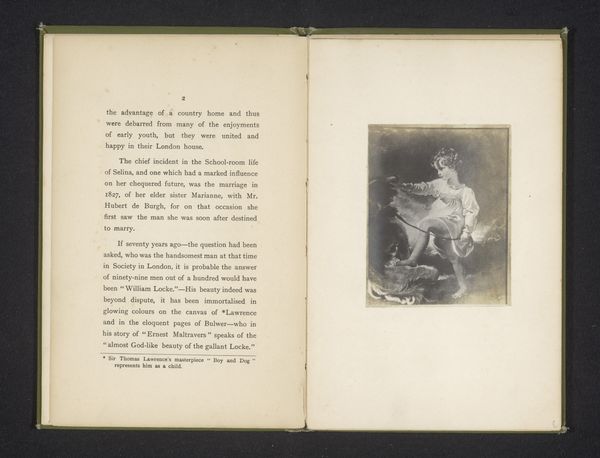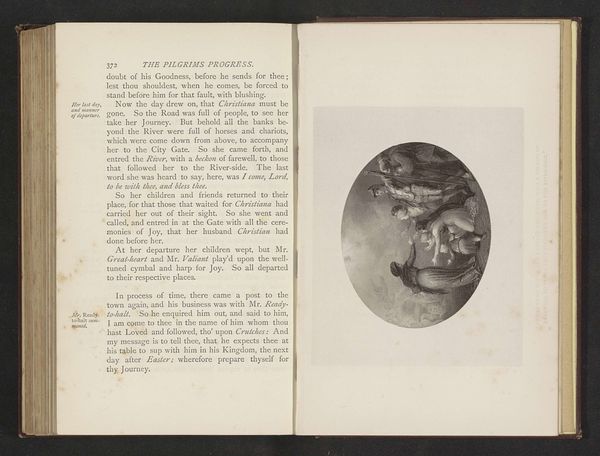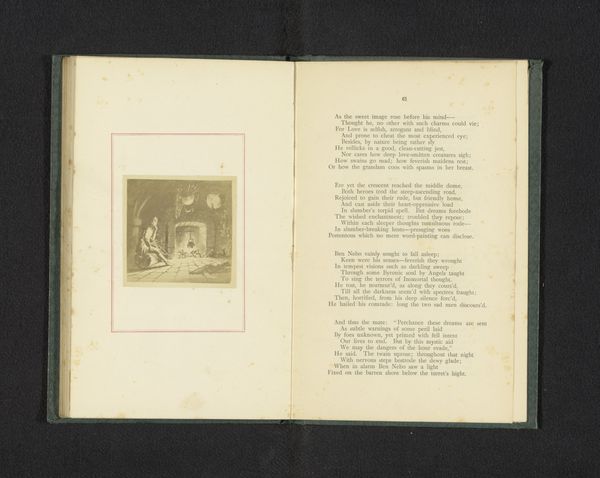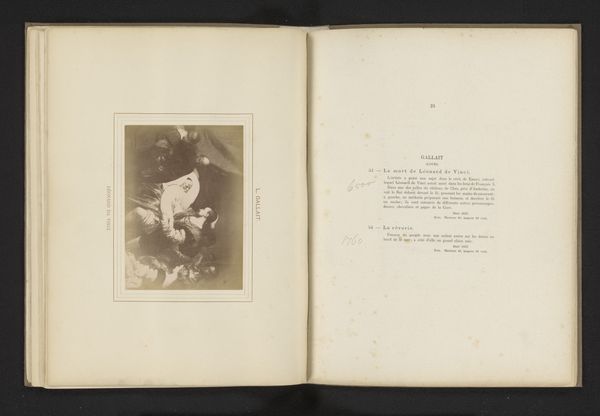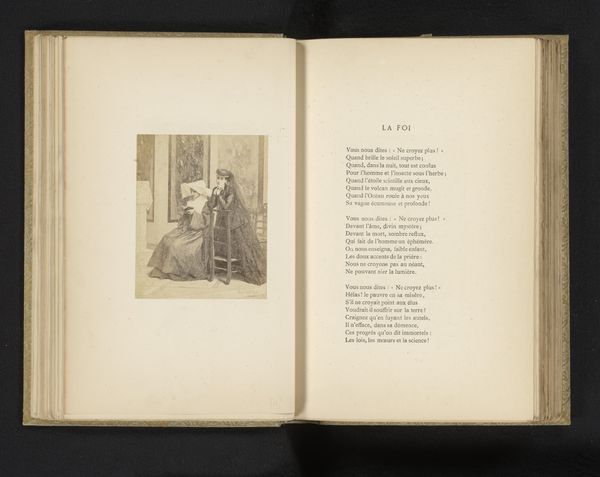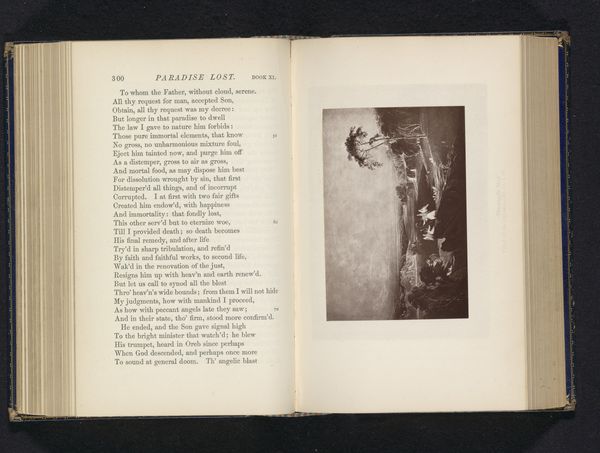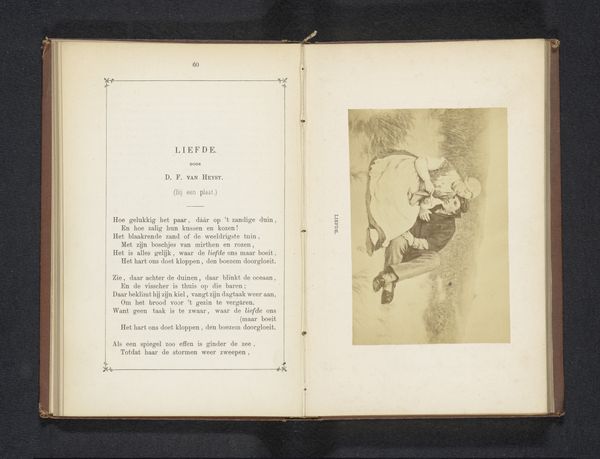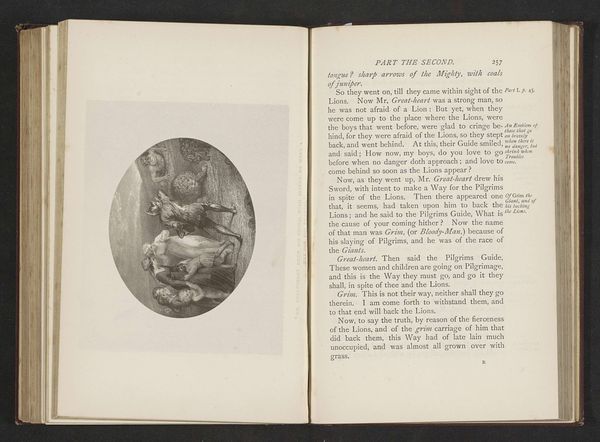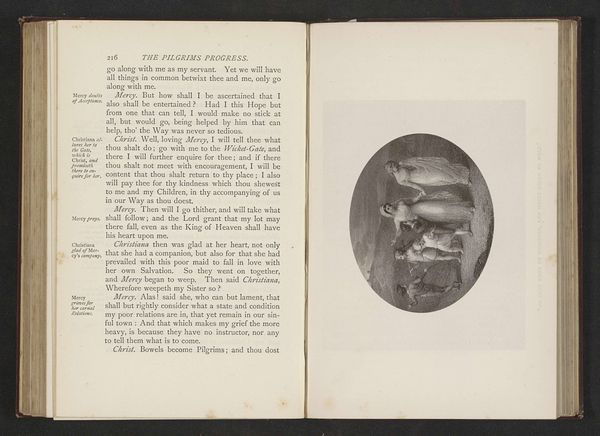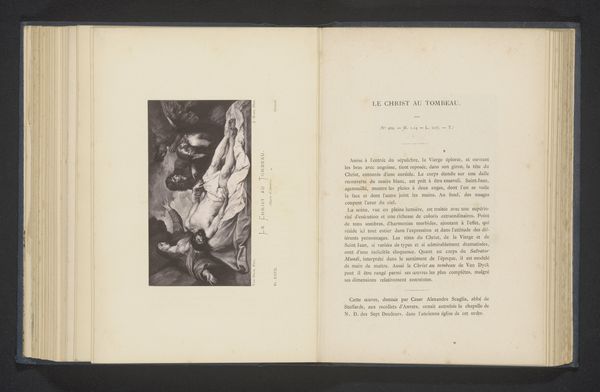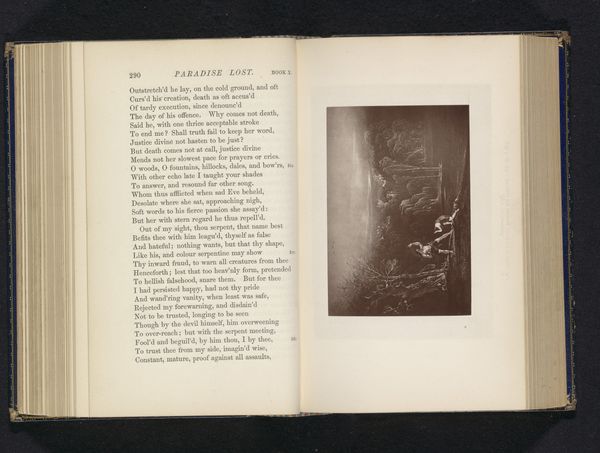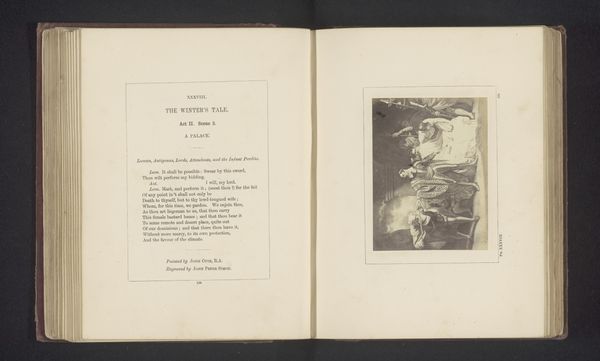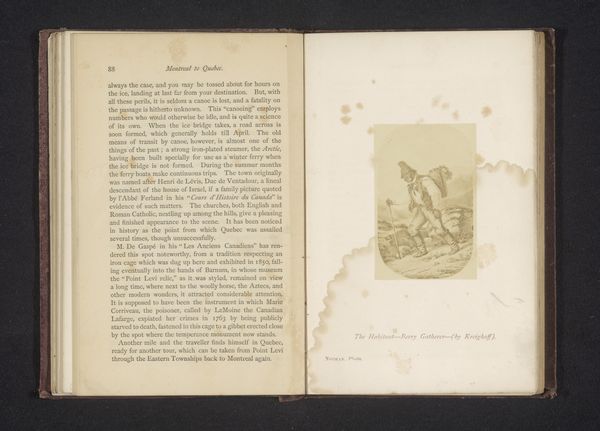
Fotoreproductie van een schilderij, voorstellende een gezicht op een baai, met op de voorgrond een schip before 1871
0:00
0:00
print, photography
# print
#
impressionism
#
landscape
#
photography
Dimensions: height 58 mm, width 78 mm
Copyright: Rijks Museum: Open Domain
Curator: This intriguing photogravure is titled "Fotoreproductie van een schilderij, voorstellende een gezicht op een baai, met op de voorgrond een schip"—which translates to "Photographic reproduction of a painting, depicting a view of a bay, with a ship in the foreground." The Flaglor and Perkins studio produced this image before 1871, so the scene it depicts must be from an earlier painting. Editor: There's an ethereal, dreamlike quality to it. The soft sepia tones and the almost hazy focus make the bay and the ship seem distant, perhaps even lost in time. The palm in the foreground, juxtaposed with the ship, seems to suggest trade routes and the exoticism of the sea. Curator: Yes, that palm strikes a stark contrast to the traditional sailing vessel—though, keep in mind that photography served a significant documentary purpose in the mid-19th century. As a reproduction of a painting, we might consider its relationship to academic painting styles and the emergent impressionistic aesthetic that began influencing landscape painting during this period. Editor: Absolutely. Notice how the sails are furled, but the ship looks quite stable. As it suggests calm waters, I get a sense of preparedness. What does the image symbolize for those who encountered it? It evokes the era of global maritime activity and probably also the power and mystery associated with ships and oceanic travel. Curator: Well, consider also that Flaglor and Perkins aimed to present an artistic sensibility in its commercial studio work. As this period developed, they helped popularize photographs to a broader audience, even creating art books of poetry with reproduced images such as these bound-in, thereby blurring lines between commerce and fine art. Editor: It is a little murky, visually, even for my tastes. I might read that murkiness metaphorically. The details obscure. But that is probably my psychological inclinations bubbling to the surface. Regardless, in art history, we need some interpretive murk! Curator: Perhaps you have something! It seems likely this imagery had cultural significance that exceeded mere commerce, or perhaps we see the stirrings of it in the symbols within! Editor: Well said, a fine exploration!
Comments
No comments
Be the first to comment and join the conversation on the ultimate creative platform.
